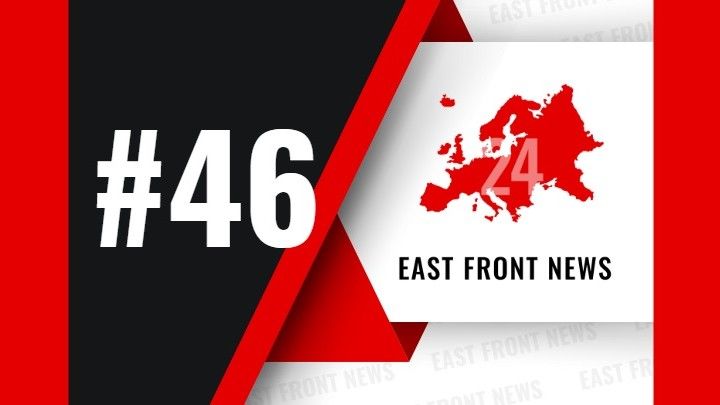East Front News #46: Poland Strengthens Defences, K2 Tanks Debut Abroad, and Regional Tensions Persist

East Front News is a weekly newsletter summarizing the past week’s most important events concerning security and the situation in the Central and Eastern Europe region. It includes original opinions and comments, along with key news items significant from a Polish perspective. If you would like to receive this newsletter, please sign up by clicking .
HSW and Allison Transmission Forge Strategic Partnership for Gearbox Production in Poland
The signing of a letter of intent between Huta Stalowa Wola S.A. (HSW) and U.S.-based Allison Transmission Inc. marks a significant milestone in the development of Poland’s defence industrial base. The agreement sets the foundation for the assembly and eventual full-scale production of advanced gearboxes in Stalowa Wola, specifically for use in Polish-designed combat vehicles. These include platforms such as the Borsuk infantry fighting vehicle and future systems like heavy IFVs and technical support vehicles currently under development. This cooperation aligns with Poland’s broader strategic goal of increasing domestic defence production capacity and reducing reliance on foreign supply chains.
The collaboration was made possible by HSW’s 2023 acquisition of the Drive Systems Plant, historically responsible for gearbox production. According to HSW representatives, initial assembly will involve pre-manufactured units, with a gradual transition to full domestic production of all components. Additionally, HSW will service Allison gearboxes, enhancing local maintenance capabilities. For Allison Transmission, a global leader in fully automatic transmissions, this move represents a gateway to expanding its presence in Central and Eastern Europe. For Poland, it is another step in transforming HSW into a regional hub for armoured vehicle innovation and manufacturing, strengthening the entire Polish Armaments Group (PGZ), one of the largest defence conglomerates in Europe.
Read more
Slovak Shield 25: Debut of Polish K2 Tanks and Potential for Regional Defence Cooperation
The participation of Poland’s 9th Armoured Cavalry Brigade in the „Slovak Shield 25” international exercise marks not only a milestone in the operational deployment of the newly acquired K2 Black Panther tanks, but also a strategic opportunity for Polish defence industry diplomacy. Just six months after receiving the tanks, Braniewo’s armoured troops are field-testing them in a multinational context—an impressive testament to the pace of training and operational readiness. The deployment also marks the international debut of the K2GF tanks, transported by the 16th Logistics Regiment using Polish low-loader platforms, showcasing both combat and logistical capabilities.
For Slovakia, which is actively seeking a replacement for its aging fleet of T-72M1 tanks, the presence of K2s on its soil could serve as a practical demonstration of their performance. As Slovakia considers acquiring up to 104 new tanks, with K2PL among the leading contenders, the visibility and interoperability of Polish-operated K2s may influence procurement decisions. Given the ongoing negotiations to produce future variants of the K2 in Poland under Korean-Polish industrial cooperation, this exercise not only strengthens defence ties within NATO but may also position Poland as a regional hub for modern armoured capabilities—an attractive prospect for a neighbour like Slovakia navigating its own modernization path.
Read more
Istanbul Phase of (Non)Peace Talks
On May 16, the first direct peace talks between Russia and Ukraine since March 2022 took place. Initially, there was talk of a personal meeting between Vladimir Putin and Volodymyr Zelensky, but it did not take place, among other reasons because Moscow would have withdrawn from delegitimizing Zelensky as the head of the Ukrainian state. However, both delegations included representatives of ministries, as well as officers of the special services.
The Russian side is creating a narrative that the Istanbul talks are a direct consequence of the „capitulation talks” in the spring of 2022. At that time, Moscow expected Kiev to surrender completely. Russia’s official position has not changed this time either. It expects Ukraine not to join NATO, to recognize Crimea and four Ukrainian regions as part of the Russian state, to address the „root causes” of the conflict, and for Ukraine to remain neutral in the future.
For the Ukrainian side, such demands are currently unacceptable, but after two hours of talks, the intention to carry out a prisoner exchange in the formula of 1000 for 1000 was announced in the near future and a declaration of will to continue negotiations. Kiev declares to the United States its readiness for talks, thereby positioning Moscow as a warmonger.
USA Approves Sale of GBU-39/B Bombs to Poland: Strategic Implications for NATO’s Eastern Flank
The recent approval by the U.S. State Department for the sale of 1,400 GBU-39/B Small Diameter Bombs (SDB) to Poland marks a significant enhancement of the country’s air-to-ground strike capabilities. Valued at $180 million, the deal includes not only live munitions but also four training bombs, spare parts, and logistical support. As detailed by the Defense Security Cooperation Agency (DSCA), this sale underscores the strategic importance of Poland as a stable and reliable NATO ally in Central and Eastern Europe.
This acquisition is expected to significantly boost Poland’s capacity to conduct precision strikes while enhancing its defensive posture amid evolving regional threats—particularly from Russia. The integration of GBU-39/B bombs will improve Poland’s ability to defend its sovereign territory and fulfill operational expectations within NATO. The DSCA statement emphasizes that this move aligns with U.S. foreign policy and national security interests by contributing to the collective security of Europe. Given Poland’s expanding military modernization efforts, absorbing this advanced technology into its armed forces is unlikely to pose operational challenges, reinforcing its role as a frontline state in NATO’s deterrence strategy.
Read more
Extension of the Suspension of the Right to Asylum
On Wednesday, 21 of May, 2025, the Sejm of the Republic of Poland voted to extend the temporary restriction on the right to apply for international protection at the border with Belarus for another 60 days. This decision will come into force on 26 of May, immediately after the previous regulation expires. Prime Minister Donald Tusk, during the parliamentary debate, emphasized that the government’s priority is to seal the border to prevent the uncontrolled influx of people. He stated that while the right to asylum is important, it must not be exploited by Russia, Belarus, or smugglers as part of hybrid actions against Poland and Europe.
The Minister of the Interior and Administration, Tomasz Siemoniak, pointed to the effectiveness of the measures taken so far—such as reinforcing the technical barrier and modernizing the electronic fence—in preventing illegal border crossings. He also stressed that the restriction on the right to asylum is an effective deterrent and preventive measure, and similar solutions are being considered in other countries in the region. The extension of the restriction was supported by 366 members of parliament, with 17 voting against and no abstentions.
The restriction on the right to apply for asylum does not apply to, among others, unaccompanied minors, pregnant women, the elderly, the sick, and those who are at serious risk in their country of origin. The Sejm’s decision is a response to the ongoing migratory pressure at the Belarusian border, which, according to the government, poses a serious threat to national and public security. The restriction aims to prevent the misuse of international protection procedures for illegal border crossings and to stop individuals from using asylum applications as a means to legalize their stay in Poland en route to other EU countries.
The Strategic Scope and Limitations of France’s Nuclear Deterrence
France’s nuclear deterrence strategy, built on a doctrine of minimal but credible capability, is characterized by its independence, modernization, and operational readiness. With 290 nuclear warheads—one of the smallest arsenals among UN Security Council permanent members—France emphasizes quality over quantity. Its deterrence posture relies on two pillars: the naval-based Force Océanique Stratégique with ballistic missile submarines and a flexible air component using Rafale jets armed with ASMPA cruise missiles. France deliberately eschews the traditional nuclear triad in favor of mobility and autonomy, maintaining full presidential control and keeping its nuclear forces outside NATO’s integrated command. Current investments focus on modernization rather than expansion, with over €6.6 billion allocated in 2024 to upgrade delivery systems, infrastructure, and strategic capabilities.
However, in light of increasing tensions with Russia and the evolving security dynamics in Europe, questions arise about the adequacy of France’s arsenal to support a broader European deterrent role. President Macron’s suggestion of extending the French nuclear umbrella to European allies, including Poland, introduces new strategic considerations. While France’s forces are technologically advanced and capable of a retaliatory strike even under duress, the numerical limitation could constrain its credibility in covering a wider range of potential threats across Europe. Nonetheless, by inviting partners into joint deterrence exercises and developing next-generation platforms, France signals a willingness to adapt its doctrine. Its evolving posture may not rival the scale of U.S. or Russian arsenals but is positioned to play a pivotal role in NATO’s collective defence strategy—particularly on the alliance’s eastern flank.
Read more
If you would like to receive this newsletter, please sign up by clicking.
East Front News is a weekly newsletter and article on Defence24.com summarizing the past week’s most important events concerning security and the situation in the Central and Eastern Europe region. It includes original opinions and comments, along with key news items significant from a Polish perspective.
Aleksander Olech, PhD & Jakub Palowski, Deputy Ed. in Chief, Michał Górski







